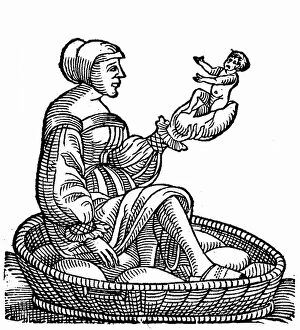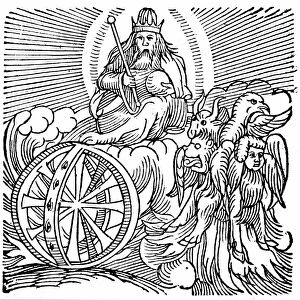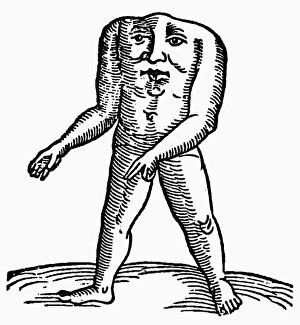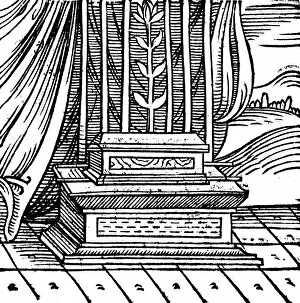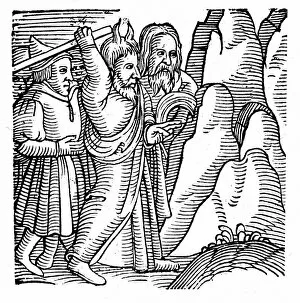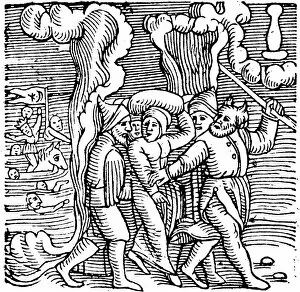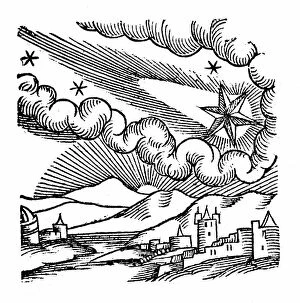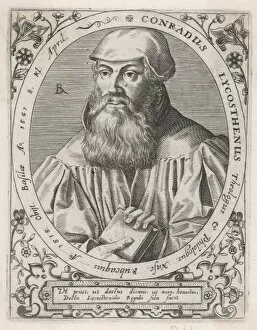Lycosthenes Collection
"Lycosthenes: A Fascinating Chronicle of Extraordinary Phenomena" Step into the world of Conrad Lycosthenes
For sale as Licensed Images
Choose your image, Select your licence and Download the media
"Lycosthenes: A Fascinating Chronicle of Extraordinary Phenomena" Step into the world of Conrad Lycosthenes, a renowned 16th-century scholar and author whose works captivated readers with their astonishing depictions. In his remarkable book, Prodigiorum ac ostentorum chronicon (Chronicle of Prodigies and Portents), published in 1557, Lycosthenes unveiled a collection of extraordinary events that left people both bewildered and awe-inspired. Among these captivating accounts was Moses striking the rock in the wilderness, an event depicted vividly by Lycosthenes. The woodcut illustration portrays the miraculous moment when water gushed forth from the barren rock, quenching the thirst of thousands wandering through arid lands. It also chronicled Moses' heroic role in delivering the Israelites from Egypt. Through his meticulous storytelling and intricate woodcuts, he brought to life this epic tale of liberation and divine intervention. Another intriguing entry within Lycosthenes' chronicle is Isaac's salvation from sacrifice. With great attention to detail, he captured Abraham's hand poised mid-air as an angel intervenes at the last moment to spare Isaac's life. The celestial wonders were not overlooked either; one such phenomenon documented by Lycosthenes was Halley's Comet of 1456. His depiction showcased this rare astronomical event that mesmerized observers across continents for centuries. Intriguingly bizarre occurrences also found their place within Lycosthenes' work. One such example is Jonah being spewed up by a whale—an incredible tale immortalized through detailed engravings that conveyed both terror and wonder simultaneously. Curiously enough, even rainfalls took center stage in this compendium. Rainfall recorded as frogs falling from above in 1355 became part of Lycosthenes' collection—a testament to nature's enigmatic and unpredictable behavior.

